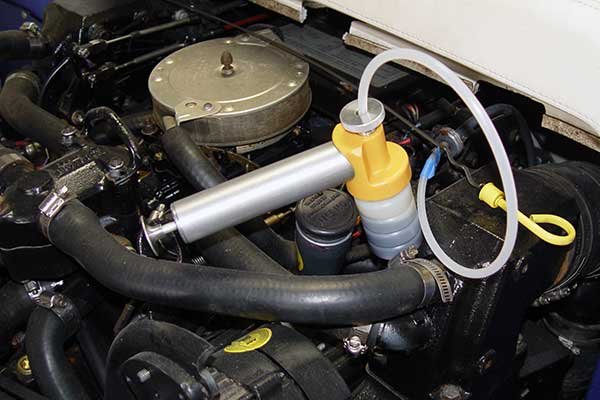OIL ANALYSIS OVERVIEW
An oil analysis will evaluate both the amount and types of metals present in the oil of the engine and other major systems of the watercraft. This maintenance necessity will provide meaningful information on the condition of the engine, and ultimately help to prevent costly repairs.
The lab will analyze the lubricant’s properties, suspended contaminants, and wear debris and flag any suspected abnormalities. Common conditions found are wear of metals, fuel dilution, dirt or water contamination, coolant, and incorrect lubricant measures.
COMMON TEST TYPES
SPECTURAL EXAM
- Overview: determines the quantity of various metals and additives in the sample
- Results May Show: excessive wear in bearing, pistons, rings, cylinders, valve train, and gears.
VISCOSITY TEST
- Overview: measurement of a material's resistance to flow
- Results May Show: fuel dilution, viscosity enhancers decomposition, and other contamination.
FLASH POINT
- Overview: tests which temperature sparks vapor in the oil
- Results May Show: contamination causes the oil to flash higher or lower than the specific flash point.
INSOLUBLE TEST
- Overview: tests if the insolubles are abrasive solids
- Results May Show: incomplete combustion
---------------
REPORT BREAKDOWN
An oil analysis will vary in content depending on the specific lab. Overall, every lab should include the raw data on metals, including wear metals, contaminant metals, multi-source metals, and additive metals, as well as fuel, soot, and water contamination, viscosity, and total-acid and total-base numbers. With that information, the report should give an overall summary with the criteria found in the data.
---------------
VIEW A SAMPLE REPORT




